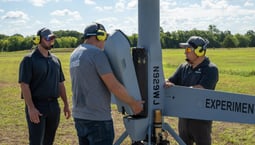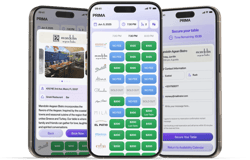Project Goals & Deliverables:
- Project Objectives:
- Integrate a non-critical mission payload or utility component into the V-BAT system, including electrical and software interface validation.
- Gain exposure to system integration workflows, data collection, and troubleshooting in a flight-ready aerospace environment.
- Project Impact on the Business/Team:
- Offloads low-priority, engineering-intensive work from the Mission Systems team to maintain focus on critical path deliverables.
- Contributes to the development and documentation of repeatable integration workflows for future payloads.
- How This Supports the Intern's Specific Career Path:
- Provides hands-on experience in avionics systems engineering, integration testing, and cross-functional collaboration—ideal for students pursuing careers in aerospace, robotics, or embedded systems.
- Offers exposure to full lifecycle development, from design review to potential flight test validation.
- Project Deliverables:
- Mid-internship: Documented interface requirements, wiring diagram updates, and test plan for payload integration.
- Final: Validated hardware/software integration on bench or aircraft, along with a technical report summarizing design, testing, and outcomes.
Required qualifications:
- You are an undergraduate, graduate or PhD student expected to graduate in December 2026 or Spring 2027.
- Background in Electrical Engineering, Mechanical Engineering, or related hardware disciplines
- Demonstrated cross-functional experience (e.g., mechanical or electrical engineers with some exposure to software tools, or software students with hands-on hardware experience)
- Familiarity with system integration, basic prototyping, and interpreting engineering documentation (e.g., schematics, wiring diagrams, or CAD)
- Strong problem-solving abilities and a hands-on, iterative approach to engineering tasks
Preferred qualifications:
- Experience with Python, MATLAB, or scripting for data analysis or test automation
- Familiarity with embedded systems, firmware, or data interfaces
- Exposure to mechanical or electrical CAD tools
- Strong communication skills and experience working in multidisciplinary teams
KPIs & Milestones:
- Week 1–2: Onboarding & Familiarization
- Completes onboarding tasks, safety training, and lab access setup
- Reviews system documentation, ICDs, and relevant wiring diagrams
- Demonstrates understanding of project scope and integration requirements
- Week 3–4: Planning & Early Execution
- Defines integration plan with mentor approval
- Identifies necessary components (connectors, harnesses, interface points)
- Creates draft wiring diagrams or block diagrams
- Begins initial bench-level prototyping or interface testing
- Week 5–6: Midpoint Review
- Presents progress update to mentor and team
- Achieves functional hardware/software integration on bench (partial or full)
- Submits a written midterm report covering test plan and early findings
- Week 7–8: Testing & Iteration
- Conducts validation testing, collects and analyzes data
- Troubleshoots and iterates based on test results
- Begins drafting final documentation (integration summary, test report)
- Week 9–10: Final Delivery
- Demonstrates completed integration on bench or test platform
- Submits final technical report and documentation package
- Presents project outcomes in a final presentation to the team
Top Skills

What We Do
Founded in 2015, Shield AI is a venture-backed deep-tech company with the mission of protecting service members and civilians with intelligent systems. Its products include the V-BAT and X-BAT aircraft, Hivemind Enterprise, and the Hivemind Vision product lines. With nine offices and facilities across the U.S., Europe, the Middle East, and the Asia-Pacific, Shield AI’s technology actively supports operations worldwide.
Why Work With Us
What makes Shield AI special is our people. We unlock the power of autonomy, and in the face of overwhelming odds and challenges, we find ways to win and make a difference for our customers. We bring together software, AI, and aerospace engineering disciplines to deploy the most intelligent aviation capabilities in the world.
Gallery











